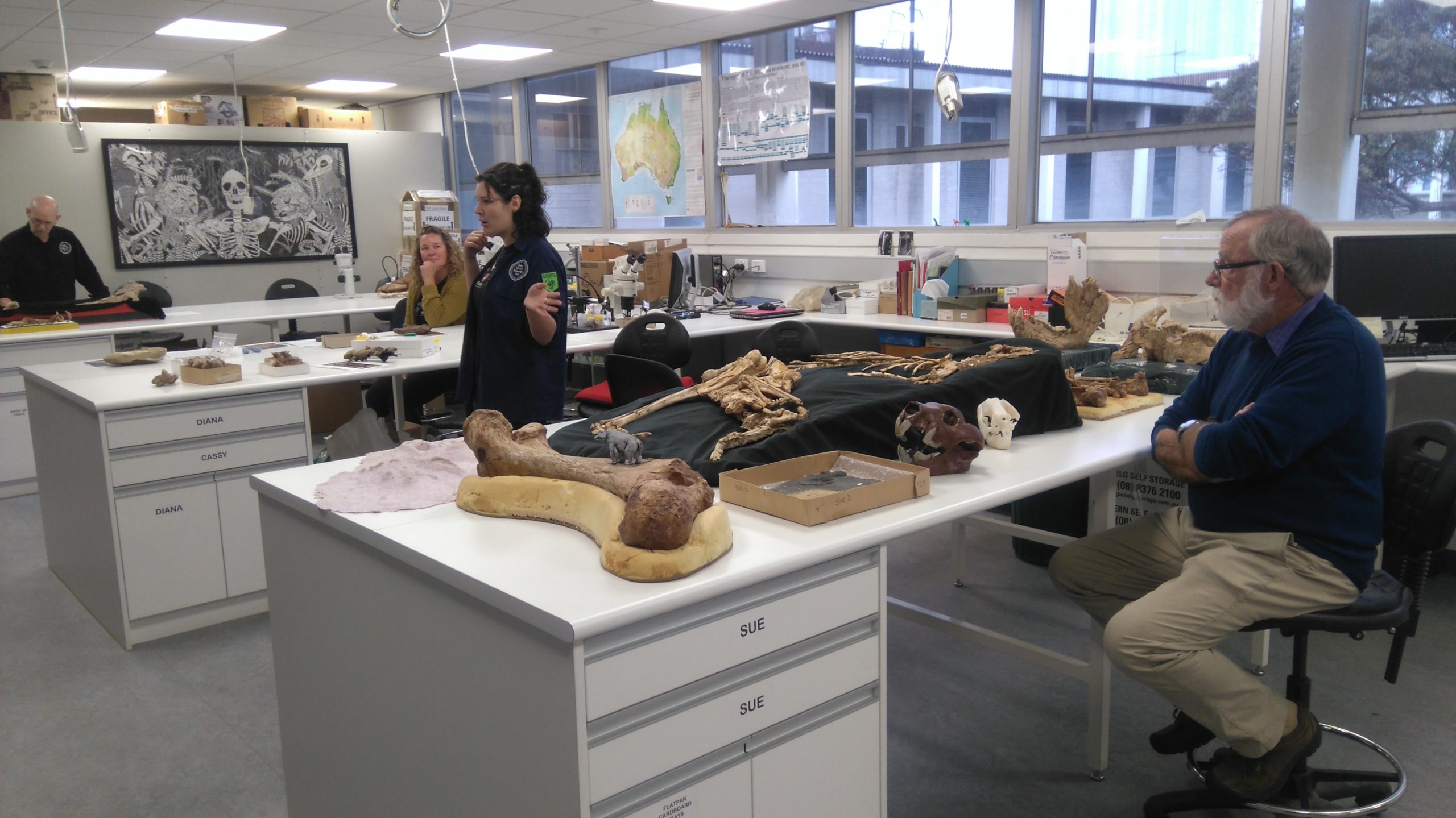Flinders Palaeontology
One of the largest vertebrate palaeontology research groups in the world, our lab has around 30 members, including academics, postdocs, research support staff and research students. We also have regular volunteers who make great contributions to our lab and field work.
Our academic and research support staff work closely with students in an integrated research environment. This supports a culture where people studying different topics using different approaches learn from one another, maximising the transfer of skills and knowledge, and enhancing future employability. We offer an outstanding training ground for students and early-career researchers. We recognise that each lab member has a role to play in ensuring that what we do is consistent with these values, and that there is always room for improvement.
The Palaeo Lab had its genesis in the mid-1970s when Rod Wells was appointed to teach animal behaviour and anatomy. In 1988, Rod introduced ‘Vertebrate Palaeontology’ as a third-year topic, running it as a field intensive at the Naracoorte Caves. Nowadays, our second-year topic ‘Vertebrate Anatomy & Evolution’ is run at the Caves each Spring. As is traditional, the Palaeo Lab was located in the basement of the Biological Sciences building for many years, but was moved up two flights of stairs to Level 1 in 2014 when John Long and Trevor Worthy arrived at Flinders and we outgrew the old space.
Flinders Palaeontology has an unrivalled array of research facilities. These include: a research lab; two fossil preparation labs; an acid digestion lab; a large collection of fossil and modern specimens; an extensive library; office space for 30 staff, students and visitors; and a large store of field equipment. Our microscope room houses a scanning confocal microscope for microwear analysis, a superior focus-stacking photographic setup, a surface laser scanner, and a 3D printer. The Rich Palaeontology Library consists of more than 20,000 reprints of scientific articles and many books donated to the lab by Tom Rich and Pat Vickers-Rich, Rod Wells and James Moore.
